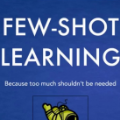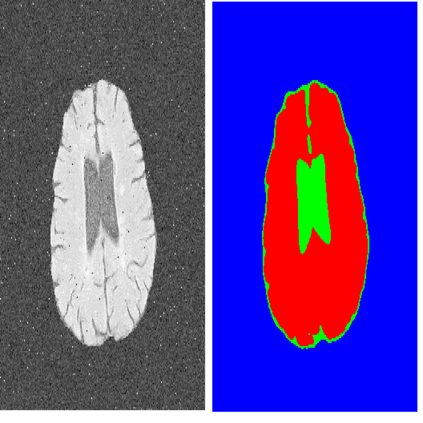Widely used traditional supervised deep learning methods require a large number of training samples but often fail to generalize on unseen datasets. Therefore, a more general application of any trained model is quite limited for medical imaging for clinical practice. Using separately trained models for each unique lesion category or a unique patient population will require sufficiently large curated datasets, which is not practical to use in a real-world clinical set-up. Few-shot learning approaches can not only minimize the need for an enormous number of reliable ground truth labels that are labour-intensive and expensive but can also be used to model on a dataset coming from a new population. To this end, we propose to exploit an optimization-based implicit model agnostic meta-learning (iMAML) algorithm under few-shot settings for medical image segmentation. Our approach can leverage the learned weights from diverse but small training samples to perform analysis on unseen datasets with high accuracy. We show that, unlike classical few-shot learning approaches, our method improves generalization capability. To our knowledge, this is the first work that exploits iMAML for medical image segmentation and explores the strength of the model on scenarios such as meta-training on unique and mixed instances of lesion datasets. Our quantitative results on publicly available skin and polyp datasets show that the proposed method outperforms the naive supervised baseline model and two recent few-shot segmentation approaches by large margins. In addition, our iMAML approach shows an improvement of 2%-4% in dice score compared to its counterpart MAML for most experiments.
翻译:广泛使用的传统监督深层学习方法需要大量培训样本,但往往无法对看不见的数据集进行概括化。因此,任何经过培训的模式在临床实践医学成像方面的普遍应用都非常有限。为每个独特的病菌类别或独特的病人群体分别使用经过训练的模型,将需要足够大量的整理数据集,这在现实世界的临床设置中是不切实际的。少发的学习方法不仅可以最大限度地减少对大量可靠地面真实标签的需求,这些标签是劳动密集型和昂贵的,而且还可以用来模拟来自新人口的数据集。为此,我们提议利用基于最优化的隐含模型的超小型元学习(iMAML)算法,用于医疗图像分解。我们的方法可以利用不同但小型培训样本中学到的重量,对未知数据集进行精确的分析。我们的方法与传统的少发式学习方法不同,提高了一般化能力。对于我们的知识来说,这是利用iMAML进行医学图像分解的首次工作,并探索在微光谱2号设置的模型中,通过模型分析模型中,我们现有两个模型模型模型模型模型模型模型模型模型分析的模型分析结果的强度。





